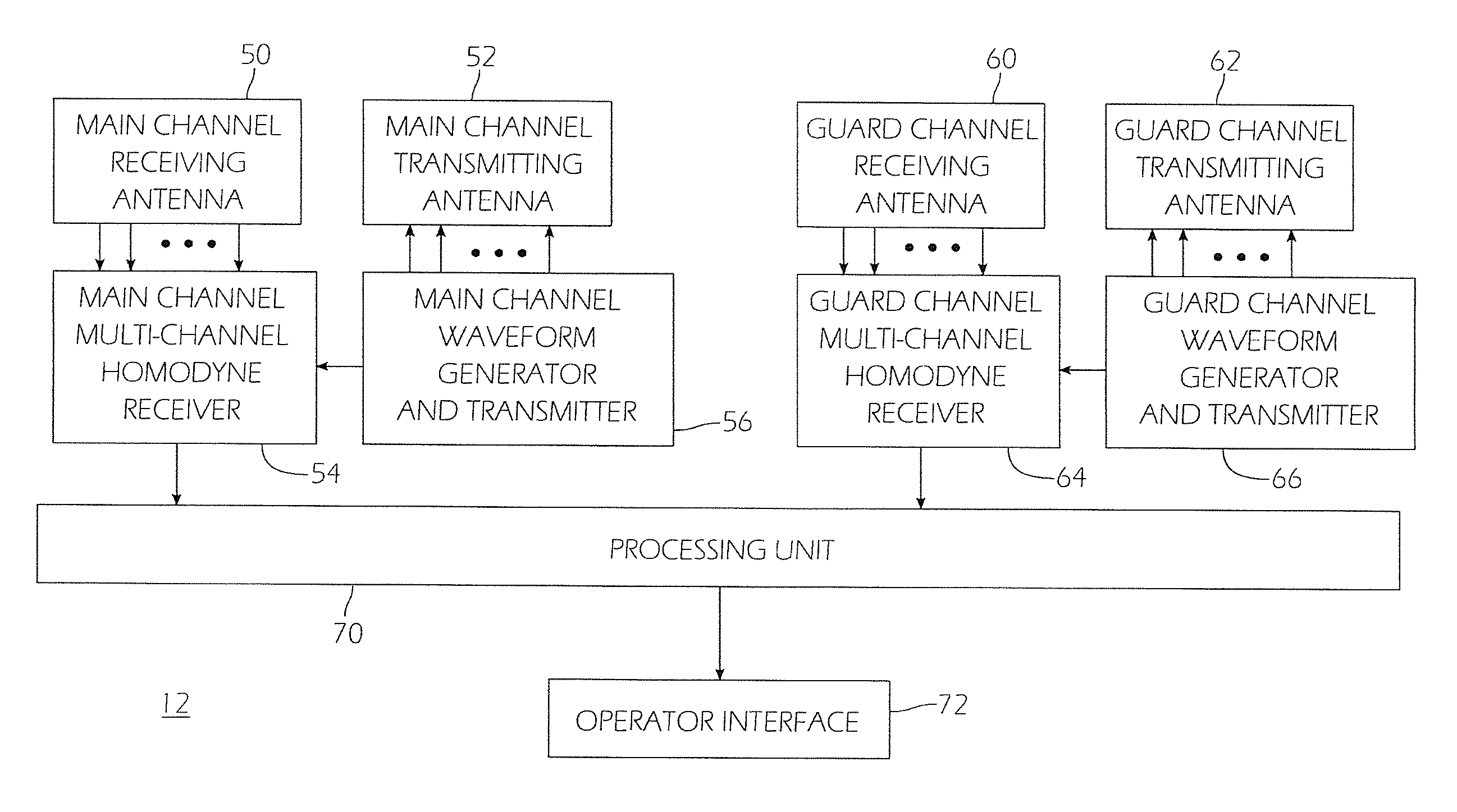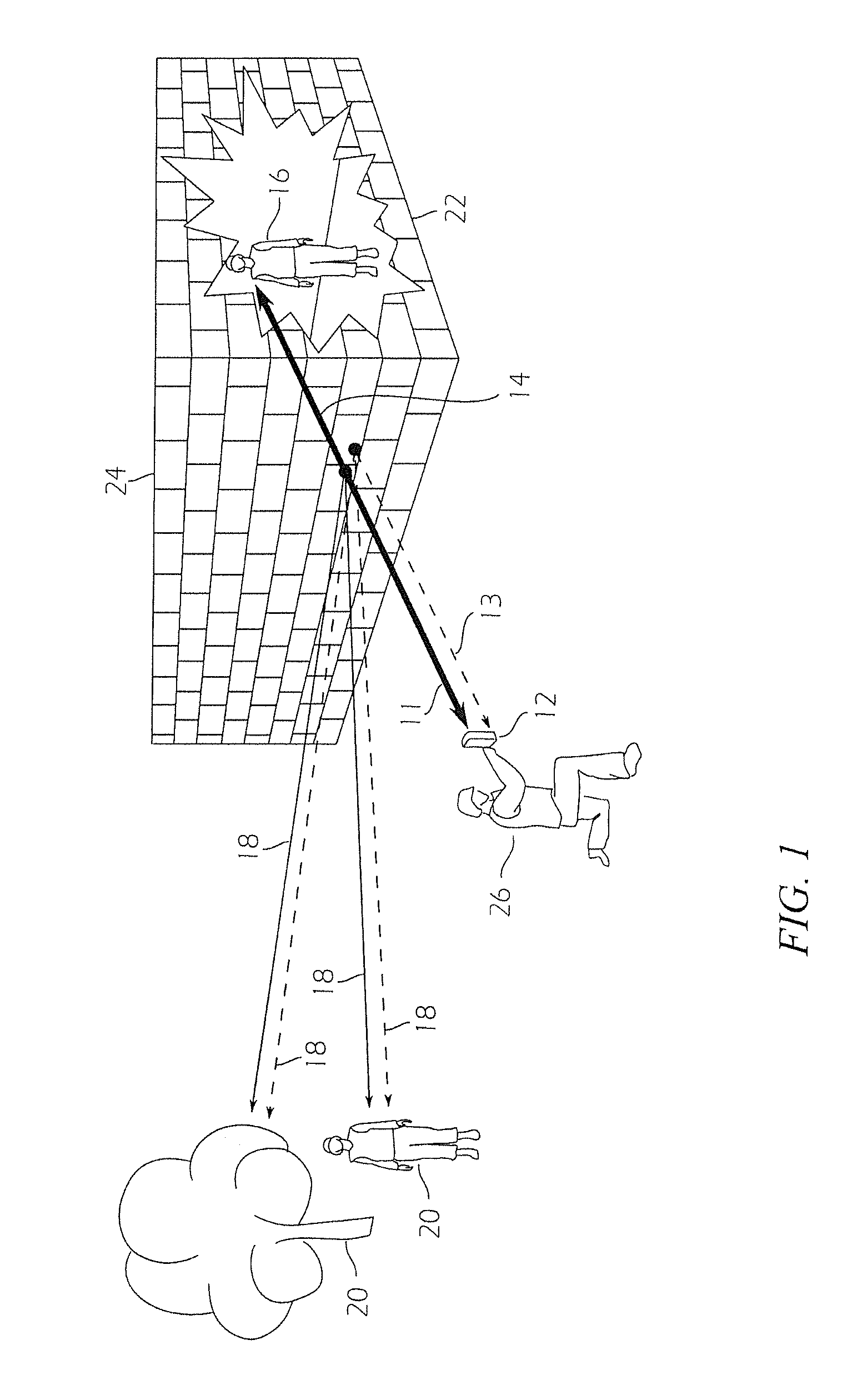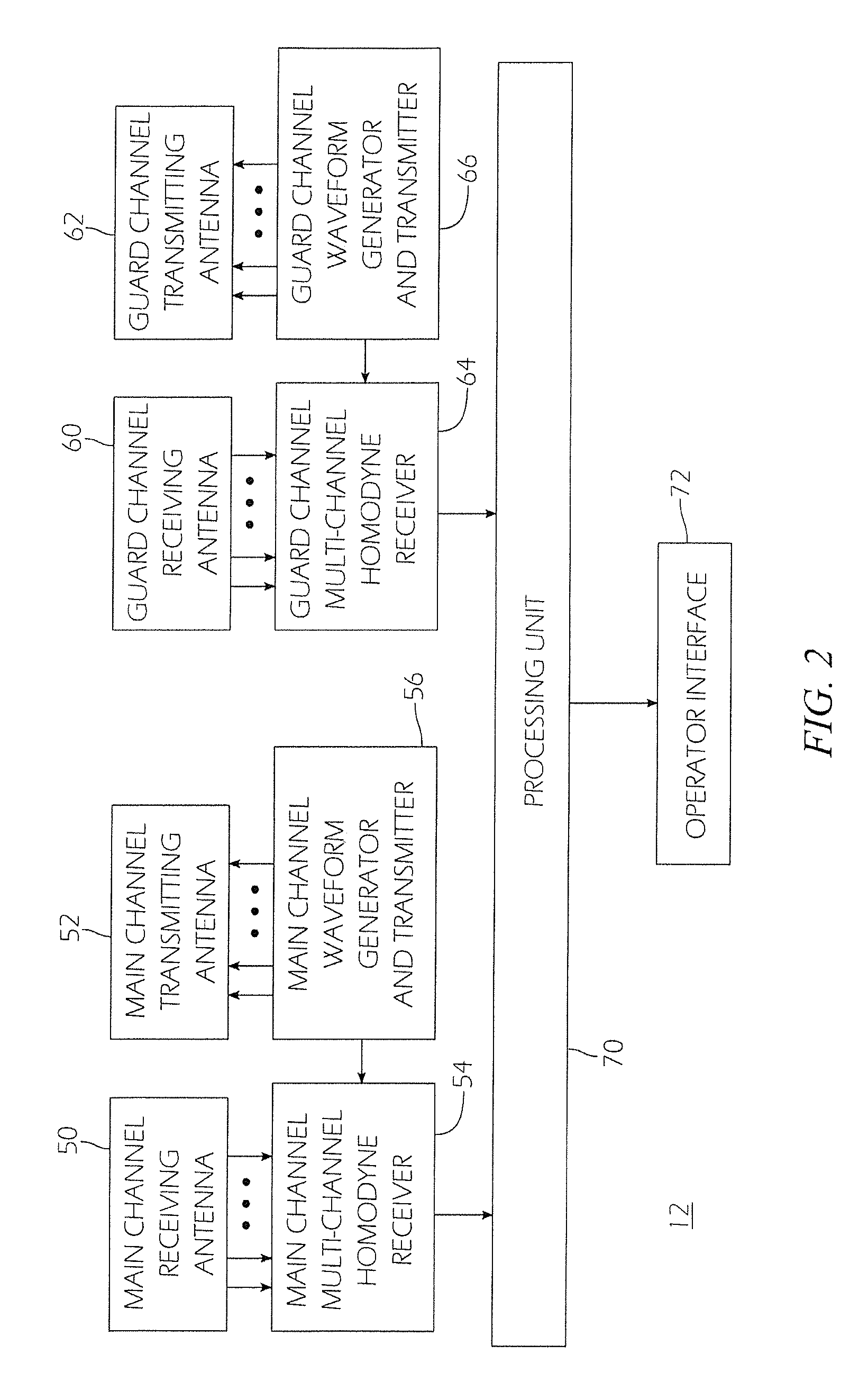Interference mitigation in through the wall radar
a radar and interference technology, applied in the field of sense through the wall radar system, can solve the problems of difficult to reliably identify weak signal returning from a desired target inside the building compared to the signal returning, and increase the difficulty of detecting targets inside the building, so as to suppress multipath interference and mitigate multipath interferen
- Summary
- Abstract
- Description
- Claims
- Application Information
AI Technical Summary
Benefits of technology
Problems solved by technology
Method used
Image
Examples
Embodiment Construction
[0020]The detailed description set forth below in connection with the appended drawings is intended as a description of the presently preferred embodiments of a high frequency guard channel for interference mitigation in a sense through the wall radar provided in accordance with the present invention and is not intended to represent the only forms in which the present invention may be constructed or utilized. The description sets forth the features of the present invention in connection with the illustrated embodiments. It is to be understood, however, that the same or equivalent functions and structures may be accomplished by different embodiments that are also intended to be encompassed within the spirit and scope of the invention. As denoted elsewhere herein, like element numbers are intended to indicate like elements or features. The terms “radio frequency” and “RF” are used herein, for brevity, to include a frequency range spanning from approximately 500 megahertz (MHz) to 100 ...
PUM
 Login to View More
Login to View More Abstract
Description
Claims
Application Information
 Login to View More
Login to View More - R&D
- Intellectual Property
- Life Sciences
- Materials
- Tech Scout
- Unparalleled Data Quality
- Higher Quality Content
- 60% Fewer Hallucinations
Browse by: Latest US Patents, China's latest patents, Technical Efficacy Thesaurus, Application Domain, Technology Topic, Popular Technical Reports.
© 2025 PatSnap. All rights reserved.Legal|Privacy policy|Modern Slavery Act Transparency Statement|Sitemap|About US| Contact US: help@patsnap.com



